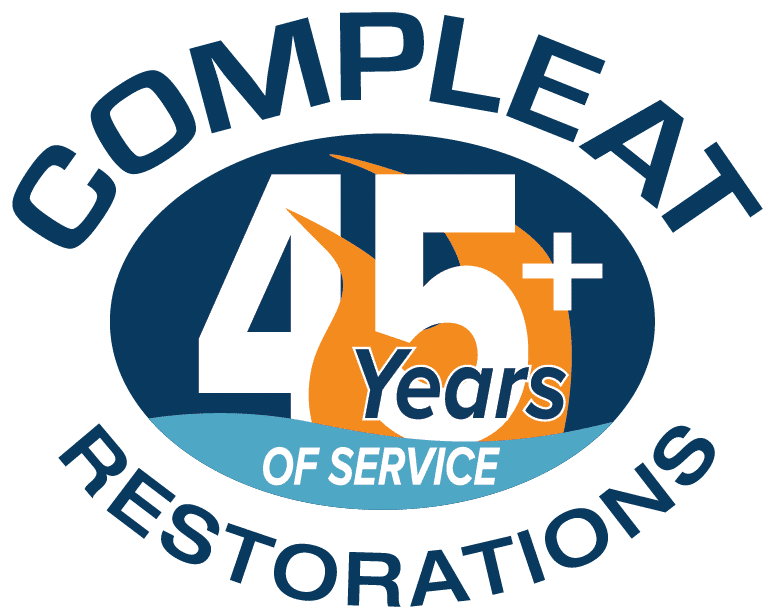Mold is one of the most inconvenient intruders you could deal with in your home. Not only does it enter without detection, but you generally have a decent mold problem on your hands by the time you recognize that there’s an issue.
Whether you are sensitive to mold or not, the fungus can cause irritation across your skin, face, and within your lungs. If you or a loved one are in fact allergic, it poses real dangers to your health and wellbeing! Mold spores can cause flare-ups and serious illness.
Many people opt for ionizers as a way to reduce mold. Others swear by air purifiers; You’ll see as you read this article that there isn’t one clear winner between the two. If you have been searching for how to reduce mold, you’re in the right place.
What is an ionizer?
Ionizers are handy devices that use ions—in other words, electrically charged particles—to bring irritating contaminants down to the floor. This is useful for people who struggle with asthma, allergies, or other sensitivities. There are few other methods as effective as ionizers for taking care of dust and other materials floating through the air of your home.
Ionizers are great pieces of technology. Using electricity, it disperses negatively charged air molecules into the room. On the contrary, pollen, dust, bacteria, and other similar substances are positively charged. These two negative and positive charges brush shoulders, causing them to attract each other. As they combine, their weight together is too much to stay suspended in mid-air, and they fall to the surface below.
This effectively cleans the air and helps keep rooms from building up too many contaminants, which can lead to mold or other nasty developments.
How is an ionizer different from an air purifier?
Both ionizers and air purifiers are often bought to take care of similar problems, but many homeowners don’t take the time to compare the two technologies. While both are used to take care of irritable airborne particles, they have different strengths.
Air purifiers physically pull in air through the filter in the machine. These filters are designed to pull the dander, pollen, and other dust-sized contaminants out of the environment. This essentially eliminates the source of many allergies and asthma triggers.
Unfortunately, air purifiers have their limits. The bigger the space you are attempting to purify, the larger and more expensive of a device it will require. You are also signing yourself up for regular maintenance such as filter swapping.
Ionizers, on the other hand, rarely require filters. This is because the machine is not actively pulling in air, but spreading those negatively charged ions we talked about far and wide. Another upside is the reach—ionizers generally take care of more airspace for cheaper.
In terms of efficiency, loudness, and upkeep, ionizers take the top spot on the podium. For more effective cleansing of the environment, air purifiers are a step ahead.
If I have mold in my home, will an ionizer get rid of it?
When it comes to reducing mold, ionizers can help the situation but will not remedy it completely. As we discussed earlier, ionizers remove contaminants from the air (and this includes mold spores) by weighing them down sufficiently to bring them to the ground.
This can help prevent serious mold problems, but it will require a little more effort on your part. Because the particles have collected on surfaces, vacuuming and dusting are a must! In a sense, it makes your job a little easier by pulling the actual mold particles out of the air. On the other hand, it does not remove them from the space completely.
Ionizers will remove the particles from the air, but they have no place to go except the walls, floors, tabletops, and other common surfaces around your home. While it may prevent you from breathing in mold spores floating in midair, they continue to pose a threat as long as they linger around.
As another unfortunate downside, even cleaning the collected particles from surfaces will kick up some spores. These mold particles can be perilous to your health and that of your household. Furthermore, if there is actual mold buildup, an ionizer won’t be able to eradicate it.
What do I do if I’m still experiencing the negative effects of mold after using an ionizer?
Despite the effectiveness of ionizers (and air purifiers), once you have a mold problem, clearing the air will only do so much. Mold is a danger that must be dealt with quickly because of how easily it can spread. These spores are actually called mycotoxin, which is an airborne toxin produced by many mushrooms and molds.
Mycotoxin coming from mold growth can bring unexpected health problems like coughing, headaches, and other sicknesses. If you or someone in your household has asthma or other similar conditions, they are very susceptible to complications from breathing in the spores.
You may still be experiencing the negative effects of mold; if so, what should be your next course of action? If you’re taking the problem seriously, it is likely time to call some professionals. Compleat Restorations has the skills and experience to rid your home of the problem. Our residential mold remediation system completely eliminates the mold. Simply killing the mold is insufficient, as dead mold still has the potential to cause illness. Our trained mold remediation crews have the knowledge, tools, and safety equipment to permanently eliminate the mold in your home.
To find out what Compleat can do for you and your household, contact us today!



